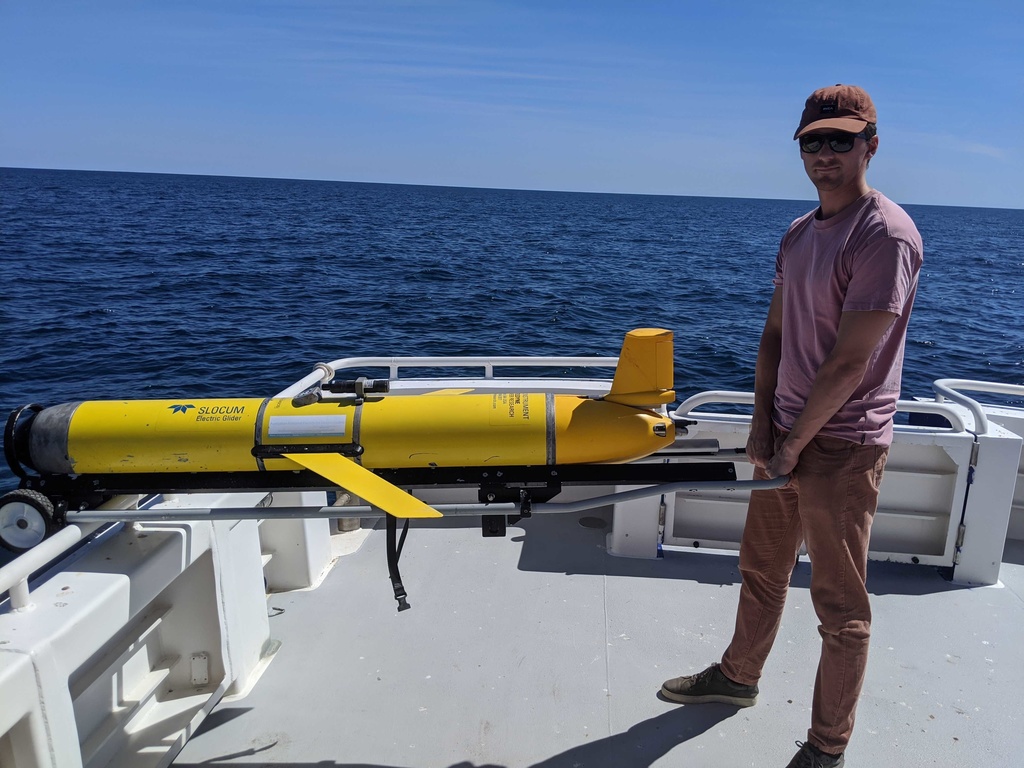We deployed our first ocean glider today since the fleet was pulled out of the water in March.
Running a national ocean observing system during the COVID-19 lockdown has been complex, with the necessary travel bans and social distancing measures affecting many of the observing activities of IMOS, and even preventing some deployments.
IMOS has continued to provide a wealth of data for use in research during the COVID-19 pandemic. IMOS’ Australian Ocean Data Network (AODN) has 246 dataset collections that can be discovered, accessed, sub-setted and downloaded. These datasets have all remained available for use in research whilst in lockdown. Remotely sensed data streams continue to be collected and delivered for use as well.
Today the IMOS Ocean Glider Facility, operated by The University of Western Australia, is celebrating the first ocean glider deployment since operations were ceased due to COVID-19 restrictions in March.
Importantly, the ocean glider is part of our Event Based Sampling sub-Facility, which uses ocean gliders to monitor marine heatwaves in coastal waters around the country.
The sea surface temperatures (SST) on the Northwest (NW) shelf of Western Australia have been very warm for winter time, with SST greater that the 90th percentile (see IMOS OceanCurrent SST Percentiles map from May 1). Indicating that a marine heatwave has been building since 12 April, not just over coastal NW Australia, but also across the whole of northern Australia including the Gulf of Carpentaria and the Great Barrier Reef.
The NOAA Coral Reef Watch has the region off the NW coast at the highest Alert Level of 2 for coral bleaching. However, the waters closer to the coast have a mosaic of lower alert levels from watch to alert level 1 (which still indicates that there could be significant bleaching).
The leader of the IMOS Ocean Glider Facility, Professor Chari Pattiaratchi, was advised on 24 April that the WA Government had relaxed the travel restrictions within the state for research purposes.
An ocean glider was transported to Broome in preparation for deployment to capture the heatwave event, with the planned transect to start at Broome then travelling to the Rowley Shoals IMOS mooring before returning to Broome. The ocean glider will be able to validate the depth of the surface warm layer shown in the forecast models. The glider will be in the water for 20-25 days.
“Deployment of an ocean glider can be managed by two people (skipper and technician) and so can easily accommodate social distancing requirements,” says Professor Pattiaratchi.
“It is important to gather data from the sub-surface in this area because tidal mixing plays a strong role in controlling the ocean temperatures. We will sample the waning phase of the heatwave and also increasing tidal action as we move into spring tides next week. This deployment is timely and relevant to understanding marine heatwaves but also for understanding tidal mixing,” Professor Pattiaratchi says.
The IMOS Ocean Glider team have made the most of their time without active gliders, updating systems, undergoing software courses, and preparing the ocean glider fleet to ensure deployment as soon as the restrictions ease.
The IMOS Ocean Glider team is now looking forward to future deployments, hoping to resume our ocean observing with the gliders in Two Rocks (WA), the Great Barrier Reef (Qld), NSW and Onslow (WA) over the next 2-3 weeks.
“Despite the disruptions caused by COVID-19 the IMOS community has continued to collect observations and conduct field operations where permitted. The preparedness and flexibility of the IMOS Ocean Glider team is a great example of our ability to adapt, adjust and continue to provide crucial ocean observations,” says IMOS Director Dr Michelle Heupel.
